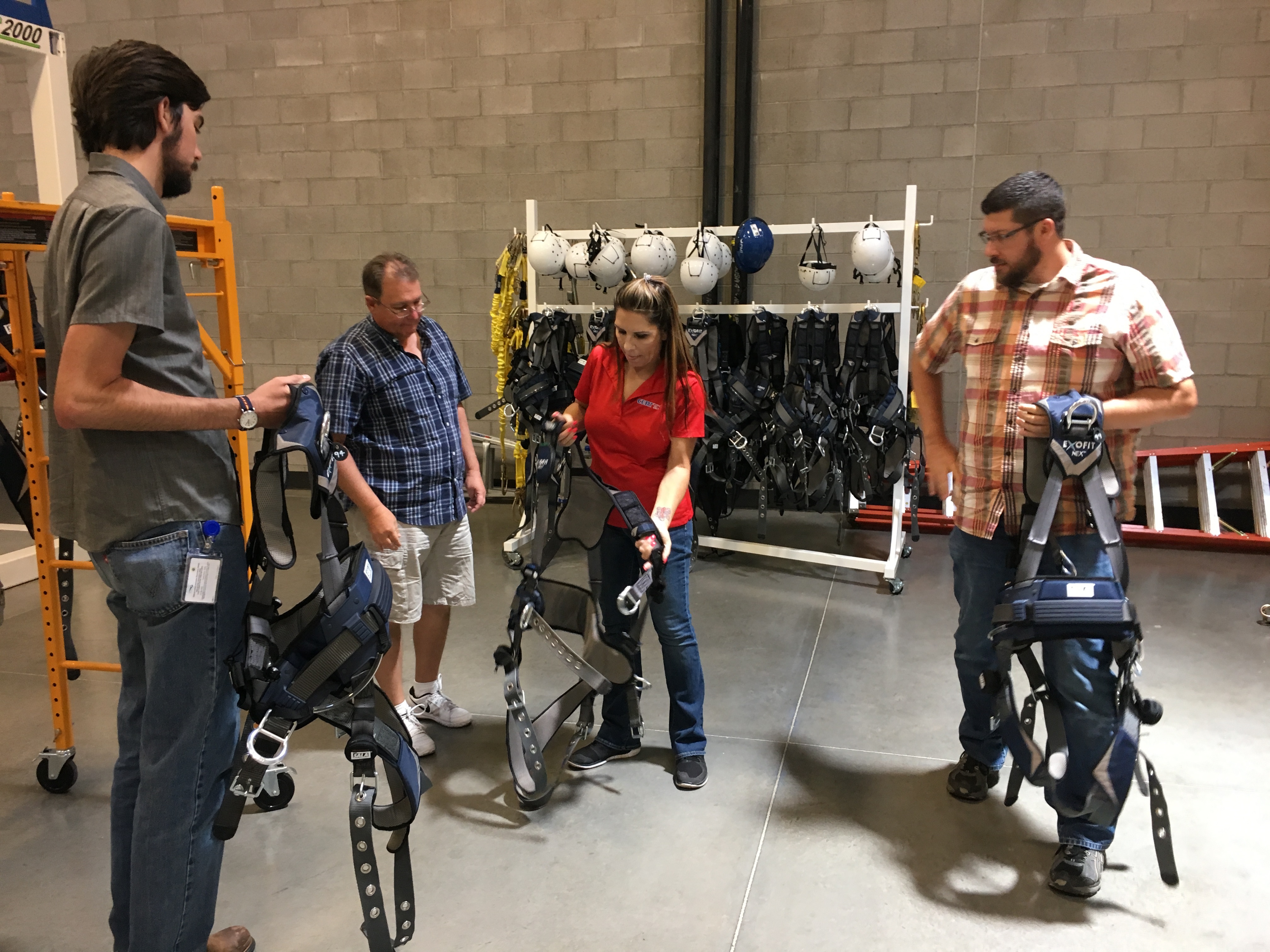July 21, 2017 - Technicians, engineers, and scientists who will be working at the LSST facility on Cerro Pachón will often be working “at height,” a term that refers to any workspace four feet or more off the ground. To prepare for their upcoming roles in Assembly Integration Verification (AIV) and Commissioning in Chile, many LSST project employees will be participating in fall protection training courses over the coming year. The first of these courses was offered in late June at safety equipment manufacturer Certex’s facility in Tucson, AZ. During this training, a group of LSST team members learned how to recognize height-related safety risks, and participated in simulations to familiarize themselves with a variety of fall protection equipment.
Whenever working at heights greater than four feet, where no fall prevention structure (such as a guardrail) is present, employees are required to utilize fall protection equipment. At the LSST facility on Cerro Pachón there will be numerous ladders and platforms providing workers with access to different parts of the Telescope and Dome; so fall protection equipment will be a daily requirement for many employees. The recent training class provided instruction in inspecting, donning, and fitting the full body harnesses that support an employee’s weight and distribute force over the body, in addition to keeping it vertical, in the event of a fall. However, the majority of fall protection training is focused on how to prevent a fall in the first place.
LSST Safety Manager Chuck Gessner emphasizes the important distinction between fall restraint and fall arrest. Fall restraint devices, such as lanyards and self-retracting lifelines that attach to workers’ harnesses, allow employees freedom of movement while providing a tether to a secure object. Some even work like the seatbelt in a car, providing flexibility under normal circumstances, but locking when a sudden movement is detected. By contrast, fall arrest involves preventing an individual who has fallen from dropping more than 6 feet. Obviously this type of safety system is critical for preventing injury; however, rescuing an employee who has already fallen can be difficult and time-consuming, and may even put the safety of other employees at risk. It’s far preferable to prevent a fall before it happens.
The focus of safety training at LSST is not just on meeting requirements, but also on developing the skills to recognize and assess safety hazards, and to appropriately employ available safety equipment and follow established protocols when risks are present. In order to ensure that LSST is providing the safest environment possible for its employees, Chuck Gessner regularly researches the safety policies and protocols of other worksites; collecting, refining, and updating best practices to implement for LSST. Safety training courses are available through the project’s Litmos learning management system, and classroom sessions, facilitated by certified instructors, are offered regularly.
Participants in the recent fall protection training class report that it was informative and useful, as well as kind of fun to hang (briefly) off the ground. All LSST employees scheduled to work on Cerro Pachón should keep an eye out for additional fall protection training courses this fall and beyond. You can read more about LSST’s commitment to safety, health, and environmental management practices here, and you can see LSST Training Coordinator Chris Montgomery demonstrating proper harness-hanging form in the LSST Gallery.


